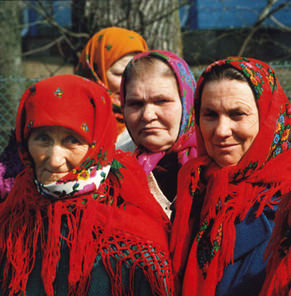Dernières publications
CORPORE, a Tool for Interpreting whole Body Monitoring Results
- Détails
- Catégorie : Communications
- Publication : lundi 14 mai 2012 12:00
CROÜAIL P., CROTEAU C., SKUTERUD L.
In long-term contaminated territories, the interpretation of whole body monitoring results is not straightforward. In these territories, years after an accident, the ingestion of contaminated foodstuffs becomes the preponderant root of exposure...
Oral presentation at IRPA13, Glasgow, Sctoland, 14-18 May 2012.
Abstract
In long-term contaminated territories, the interpretation of whole body monitoring results is not straightforward. In these territories, years after an accident, the ingestion of contaminated foodstuffs becomes the preponderant root of exposure. However, the individual ingestion profiles are multiple and complex, and it is generally difficult to check that the actual doses received by individuals comply with the long-term dose objective stated by the ICRP for existing exposure situations (1 mSv/y). In this context, the challenge is to identify, together with the exposed people, the food products that are the main sources of their contamination in order to find options to reducing their individual doses ALARA.
Within the ETHOS and CORE projects implemented in Belarusian villages contaminated by the Chernobyl accident, a software prototype, named CORPORE, was developed by CEPN, with the support of the Norwegian Radiation Protection Authority (NRPA). This tool provides a quick and simple interpretation of the whole body measurements of the inhabitants. Actually, from the results of the whole body measurement and according to the age of the person, it is possible to assess the quantity of radioactivity ingested daily (Bq/d) through food assuming averaged diets and/or specific ingestion profiles: the model was developed to address both a daily mean ingestion and episodic ingestions (e.g. much higher contamination ingested only once or twice between two consecutive whole body measurement campaigns).
This tool was used by local health professionals to develop a practical radiation protection culture among the population. Thus, in territories contaminated by the Chernobyl accident where the highest doses are now received due to a seasonal consumption of mushrooms, berries or game meat, CORPORE helped health professionals and radiametrists in discussing with and informing people about the radiological risks they are exposed to. In Norway, where the Sami people is also still facing to the management of the Chernobyl accident consequences – the reindeer meat being the main source of its contamination – the tool was used by NRPA at the occasion of periodic whole body measurement campaigns, to try to find rooms for manoeuvre with the people, case by case, for reducing their internal doses.
There is no doubt that in Japan, after the Fukushima accident, the people that have not been evacuated or those that will come back home in the future will have a similar questioning.
A1116

 Le Centre d’étude sur l’Évaluation de la Protection dans le domaine Nucléaire (CEPN) est une association à but non lucratif, fondée en 1976, pour évaluer la protection de l’Homme contre les dangers des rayonnements ionisants, sous ses aspects techniques, sanitaires, économiques et sociaux.
Le Centre d’étude sur l’Évaluation de la Protection dans le domaine Nucléaire (CEPN) est une association à but non lucratif, fondée en 1976, pour évaluer la protection de l’Homme contre les dangers des rayonnements ionisants, sous ses aspects techniques, sanitaires, économiques et sociaux.
